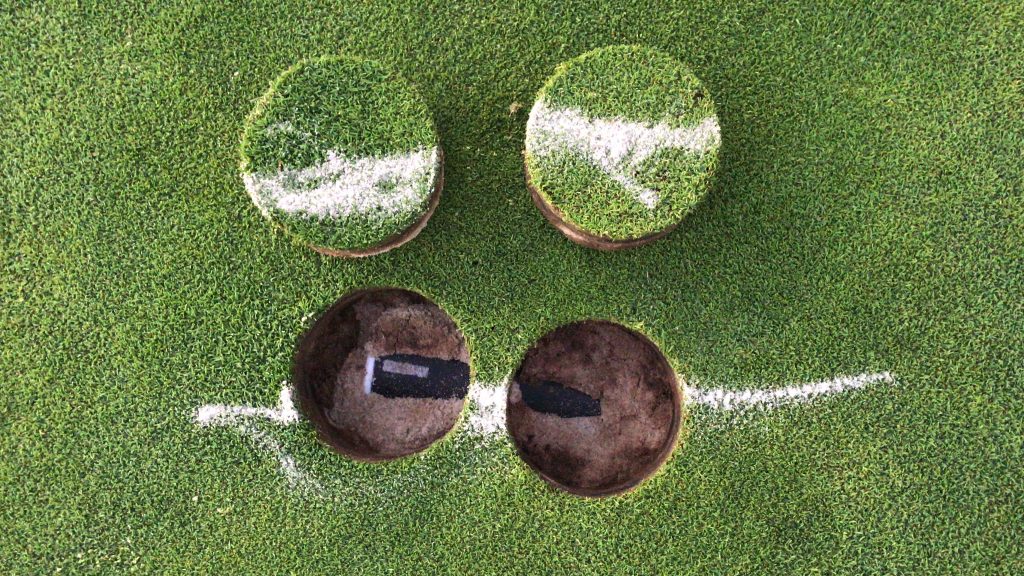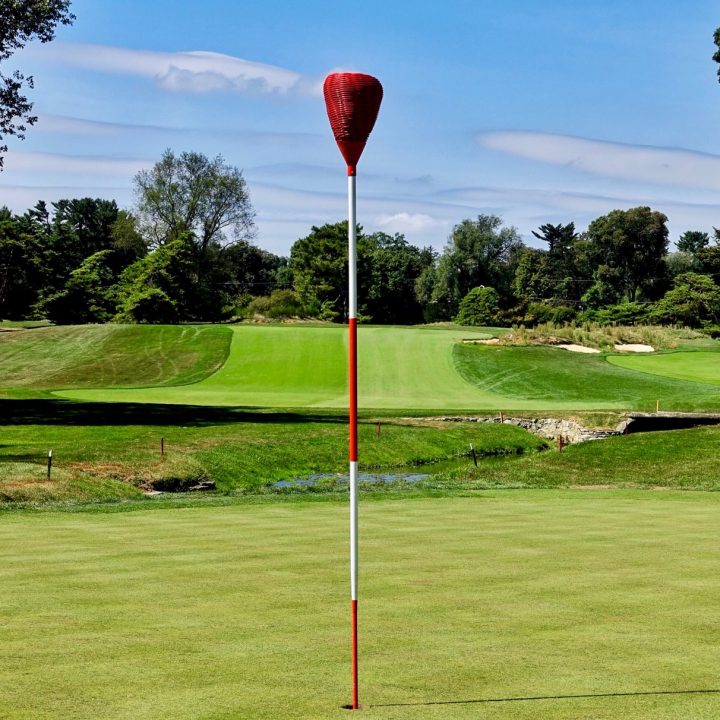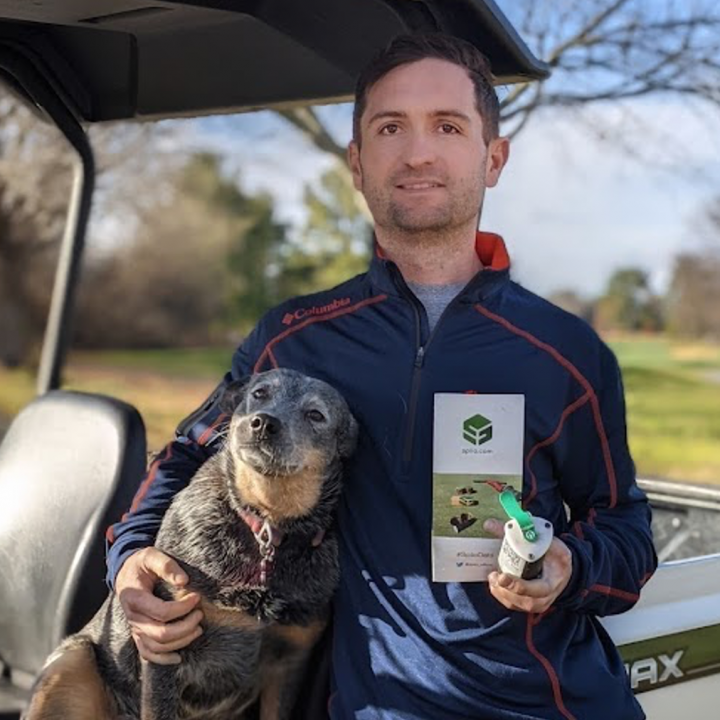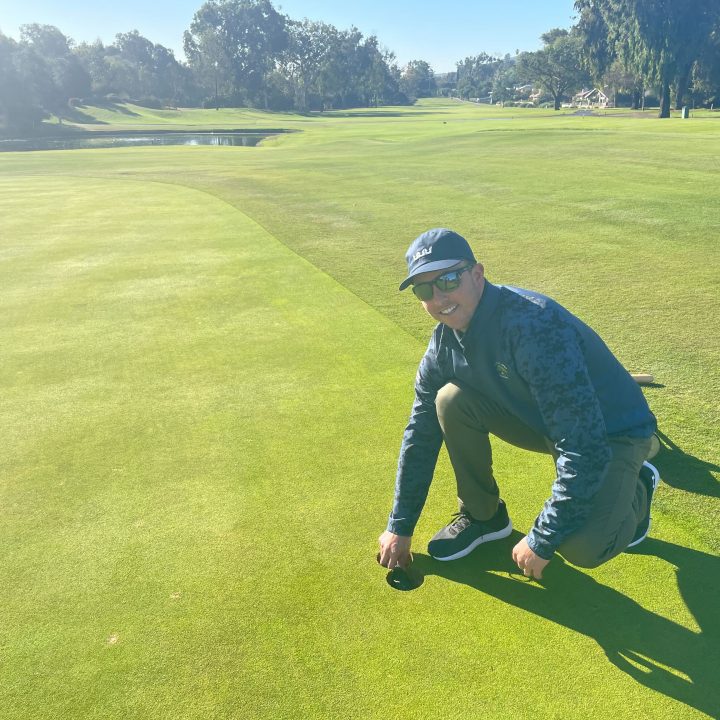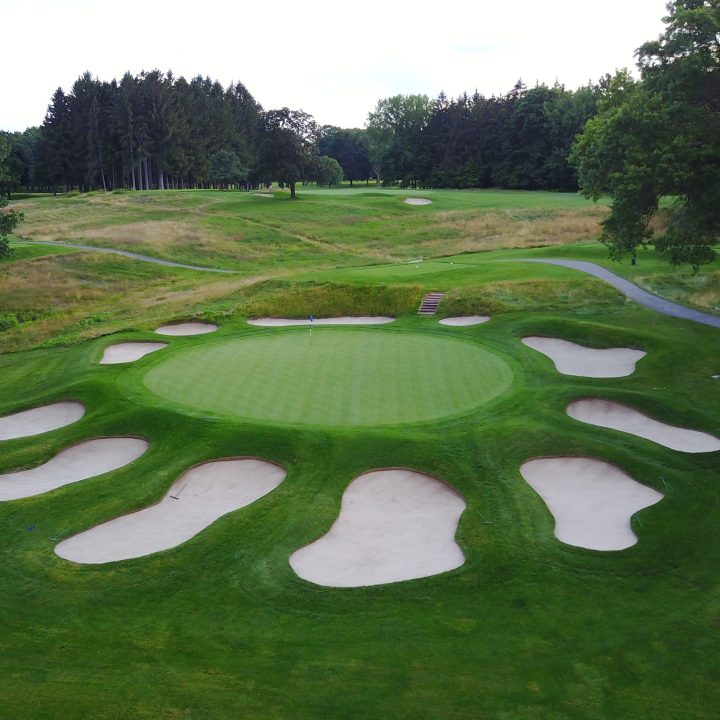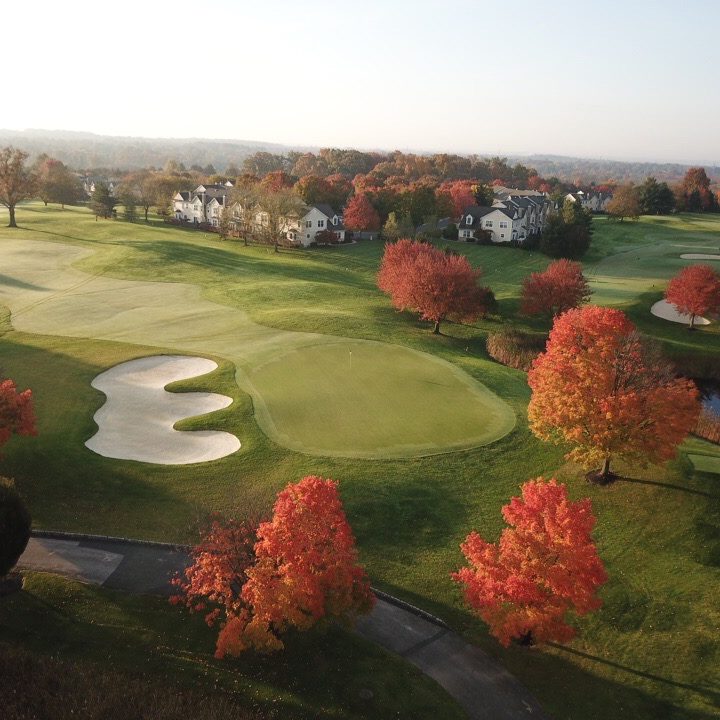Learn More
- Home
- Learn More
Install your Spiios
in the same depth
As a first rule of thumb, we always recommend that you install your Spiios in the middle of your rootzone for both greens, tees and fairways.
The Spiio is two inches wide and the soil moisture probe starts about half an inch below the top of the Spiio. Practically, this means that if you want data from, say, a two inch depth, then you need to install your Spiio one inch below the turf thatch.
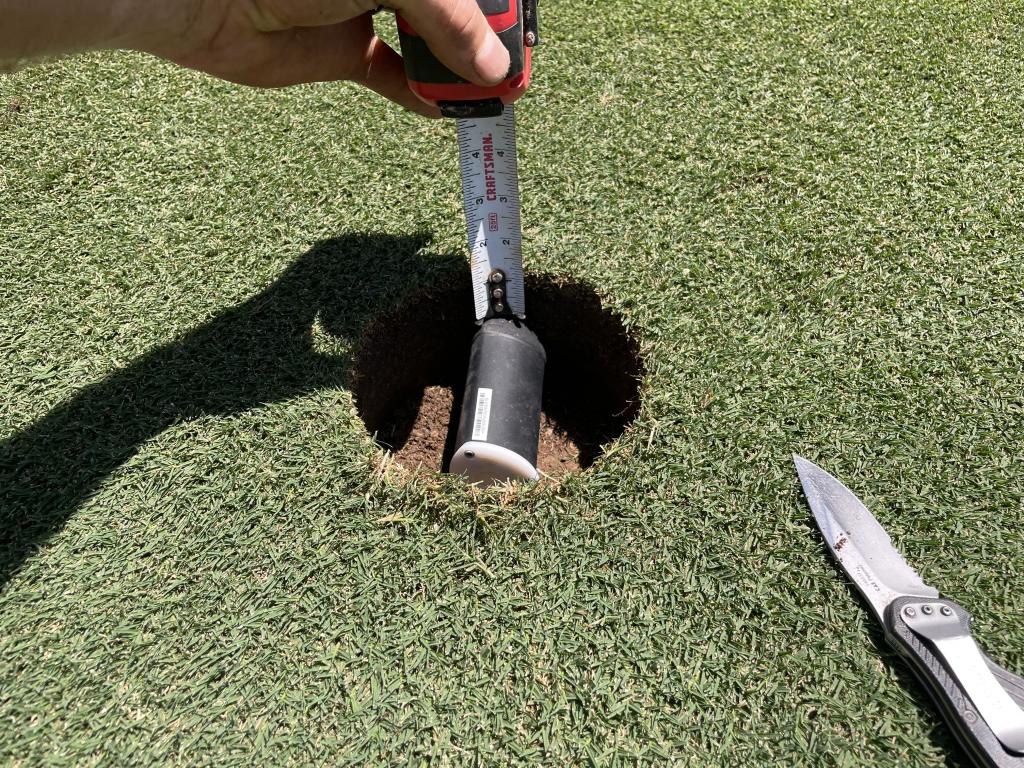
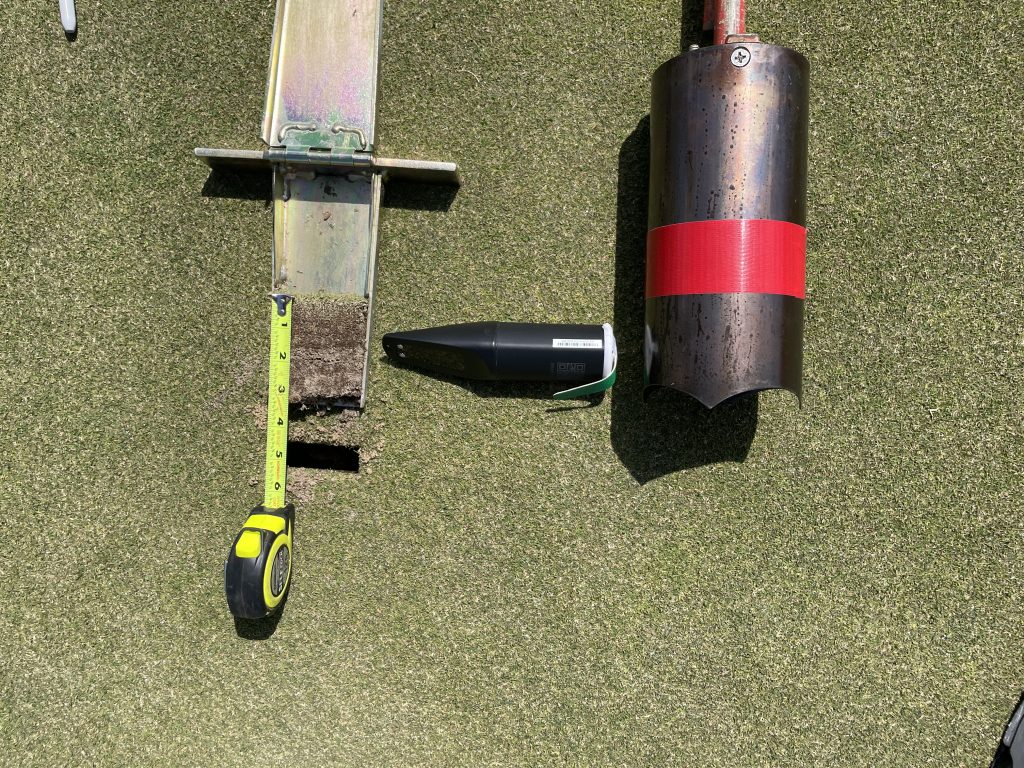
Prepare your
cup cutter
We recommend that you mark your desired depth on your cup cutter with tape for consistency. This is especially important if you are installing multiple Spiios in one day. A consistent depth between your Spiios allow you to better compare data between different areas on your golf course.
Cut your cups about
one inch apart
Cut two cups approx. one inch apart forming a bridge between the two cups. Using a knife or an ice pick, you can break the bridge of sand under the one inch gap.
Collect the excess sand on a towel or in a bucket for backfilling.
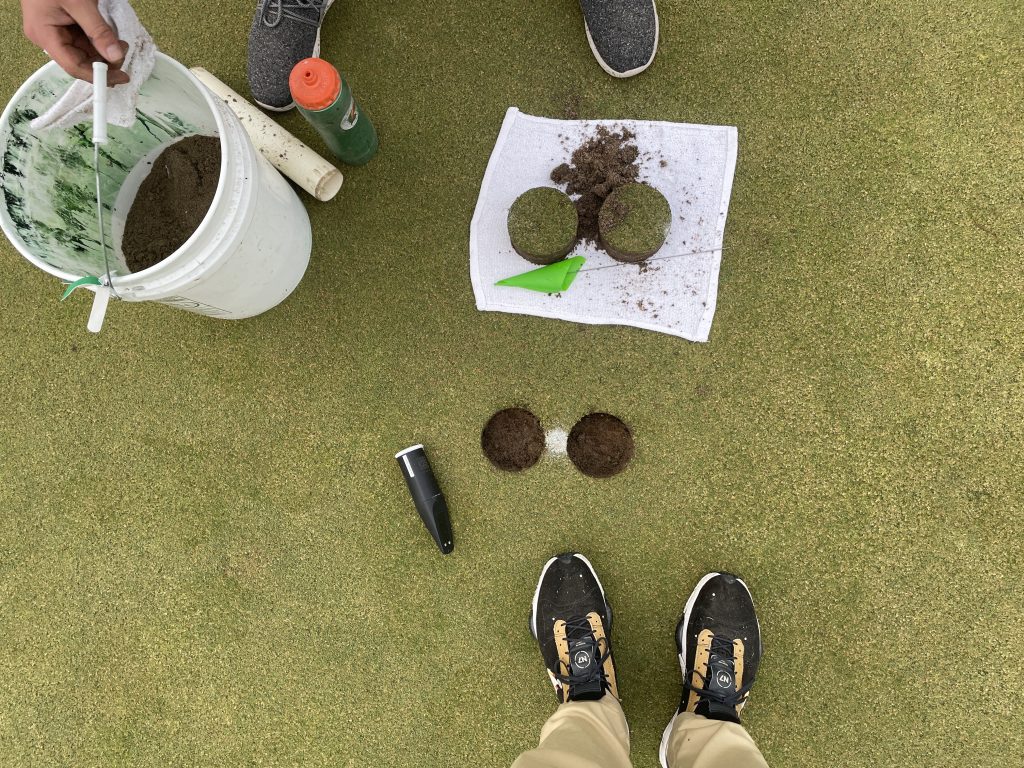
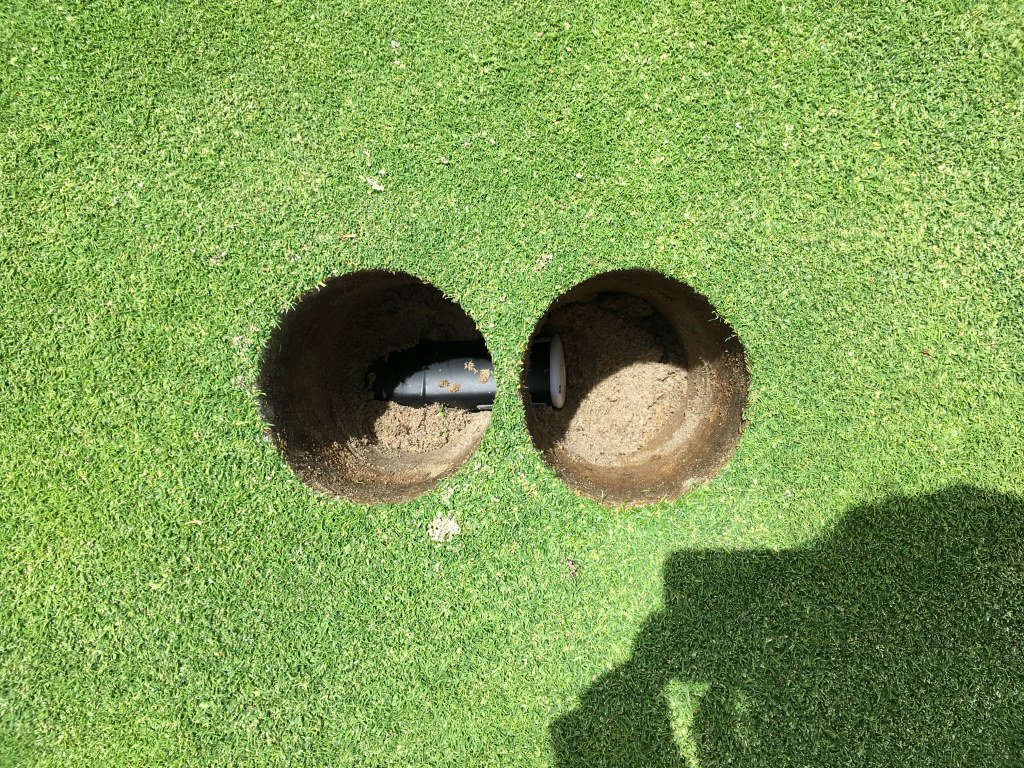
Insert your
Spiio horizontally
Insert you Spiio from right to left as seen in picture. Insert pointy part of the Spiio fully in soil leaving one cup with no Spiio in it for easier backfilling. Install the Spiio with the black shining moisture plate facing to the side. Make sure soil is compacted around the probe.
Insert you Spiio
firmly and compacted
Correct sensor insertion is the most important thing when it comes to installing your Spiio.
Make sure that the soil is firmly placed up against the faceplate of the sensor (shiny surface with two metal rivets on). The plate should face to the side, to avoid dry pockets below the moisture plate or moisture accumulation from the top.
Compact soil around and under the sensor if needed. Wet the area with water as you backfill the plugs.
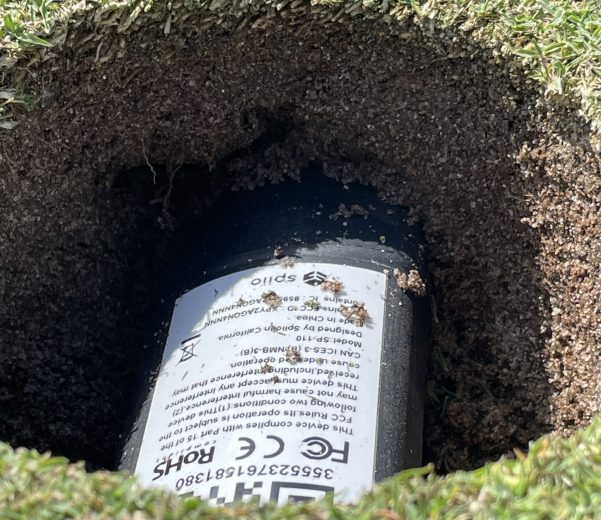
Watch the installation video with best practices
This video is intended to prepare and support Spiio users with installation process. It covers the following points:
– Installation preparation
– Best practices for a physical sensor installation in different environments
– Spiio Sensor activation and troubleshooting
– Digital installation using the Spiio Live mobile app
– Installation Pictures and Notes
Watch a complete installation video
Correct sensor insertion is the most important thing when it comes to installing your Spiio.
Make sure that the soil is firmly placed up against the faceplate of the sensor (shiny surface with two metal rivets on). The plate should face to the side, to avoid dry pockets below the moisture plate or moisture accumulation from the top.
Compact soil around and under the sensor if needed. Wet the area with water as you backfill the plugs.
How to navigate the
Map & List view
How to use your
Heat Map
How to set up
customized thresholds
How to invite users
and set data schedule
How to set up
your profile
Spiio Data
The Spiio sensor has a built-in global simcard. Your data is automatically transmitted via the strongest network operators in your area/country. In the US we use both T-mobile, AT&T and Sprint.
You can access your data 24/7 through Spiio's apps. Download our iOS app here and our android app here.
Spiio is also accessible through your browser via app.spiio.com
Our preminium dashboard is accessible via map.spiio.com
- The soil moisture sensor data is a capacitive sensor measuring the volumetric water content in the substrate (%VWC)
The temperature sensor effectively measures in-ground temperatur when below grade and air temp when above grade.
The salinity sensor measures the Electrical Conductivity (EC) in the substrate.
The light sensor measures LUX or Foot Candle values when placed above ground.
The Spiio sensor collects data every hour and transmits data 3-5 times a day as a default. You can customize and adjust when you want data according to your workday and routines in our app.
Your data is securely stored on Google Cloud servers. We are taking all precautions and measures to secure and backup your data continuously so it is safe with us. You can always download your data in our app on an ongoing basis.
Frequently
asked questions
- Battery Life
- Connection
- Data
The estimated average lifetime of a Spiio is 5 years. Now that might vary due to environmental conditions such as network strength, how deep it is buried and how often you would like data. In fact, you don't have to worry about this as we offer a lifetime warranty on the battery, which means that we will ship you a free replacement when the battery is dead.
The best way to look at this is that your Spiio connects like your cellphone via cellphone towers. In fact, it is like putting a cellphone in the ground. This cellphone service is already built into your Spiio so you don't have to anything else than turning it on. Also, we offer our service in more than 200 countries globally.
Your data is yours and always accessible via our web-based app: app.spiio.com You can download you data or build integrations with our API. Your entire history of data is available as long as your subscription is active.
Spiio's wireless sensor
The Spiio wireless sensor has four sensors in one wireless device:
- Soil moisture sensor
- Temperature sensor
- Salinity sensor
- Light sensor
We recommend placing 1-2 sensors per green as a standard in order to get a wide data set from all microclimates on your course.
Alternatively, placing 6-8 around your course will allow you to capture specific microclimates and reference greens that you can benchmark performance from.
We also recommend using Spiio for fairway irrigation monitoring.
The best way to think about this is that your Spiio sensor takes a spot measurement in the near proximity to where it is placed. You would ideally choose reference spots that represents multiple areas or an either dry, average or wet reference greens.
The battery is rated for five years of standard usage with five customized data transmissions per day. Now, conditions and cell service varies a lot from place to place so this is a guide. When battery runs out, Spiio will send you a completely FREE new Spiio sensor as long as you are still subscribed to the Spiio Service.
This might vary significantly according to network coverage, but the rule of thumb is that the Spiio sensor can be installed at a max depth of 2 feet (50cm). There's no guarantee we can go this deep as it requires good cell service in your area.
This Spiio wireless sensor has the highest IP ratings on the market: IP-68 and IP-69K.
In fact we have gone way beyond these global certification standards; accelerated lifetime tests show that the Spiio can last 20+ years in the ground.
Contact Spiio for a referral in your area

Tim Huber
CGCS, Director of AgronomyThe Club at Carlton Woods

Tim Zevotek
CGCS, Director of AgronomyRoaring Fork Club

Kyle McClintick
Director of AgronomyCalabasas Country Club

Martin Brummel
Grounds ManagerFour sensors in
one wireless device
Receive soil moisture, temperature, salinity and light data from the ground hour by hour around the clock. Spiio’s SP-110 sensor is completely wireless and communicates via the best cellular carrier in your area. Read More.
